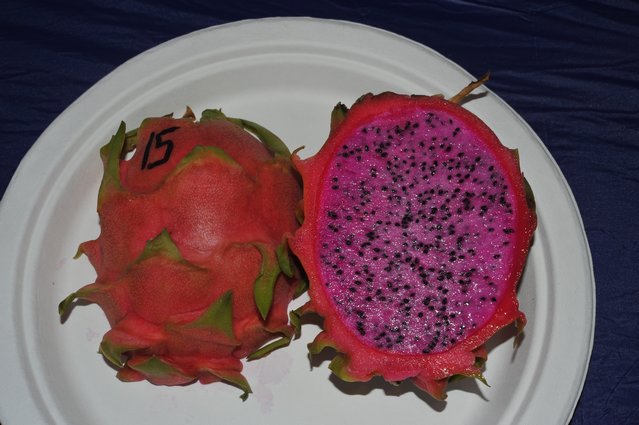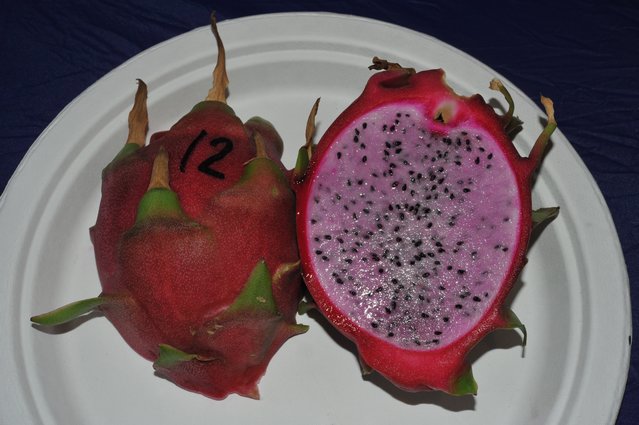*** DRAGON FRUIT ***
***** IN CALIFORNIA *****
***** AND ELSEWHERE. *****
____________________
CHAPTER 2 (pages 2 to 8)
Dragon Fruit in California
_______________________________
• Paul H. Thomson (1916-2008): the pioneer.
• Paul Thomson's hybrids
(Paragraph based on Paul Thomson's book)
_____________________________
Page 3 / 8 of the article.
________________________________
• Paul Thomson's hybrids
The first hybrids were given to P. Thomson by George Emerich Jr. who had sown hybrids of H. undatus pollinated by H. polyrhizus.
The first hybrids obtained by P. Thomson come from the crossing of two unknown species and were named "Neitzel" and "Rixford". Rixford has red pulp.
The hybrids of P. Thomson are named by a number followed by the letter S as Seedling (7-S for example). All these hybrids have produced fruits between 1998 and 2000.
1-S: dark pink pulp with good taste, 1 pound 8 ounces (680g) or slightly more, produced fruits for the first time in 1998. It would be the hybrid currently called "Physical Graffiti".

fruit of H. x "Physical Graffiti"
2-S: deep red pulp excellent flavor, weight 1pound 4ounces to 1lb 8oz (560 to 680g), produced fruits for the first time in 2000.
3-S: delicate pink pulp, superb flavour. It is the first hybrid named "Delight" by Thomson. The weight of the fruit is the same as 2-S. This produced fruits for the first time in 1998. Paul Thomson points out that this hybrid appears to have commercial potential.

fruit of H. x "Delight"
4- S: light pink pulp, close to the colour of white pulp hybrids, fruit weight: 1 lb (450g), good flavour. This hybrid has been intrusted for testing to members of the California Rare Fruit Growers (CRFG).
8- S: fluorescent dark magenta pulp, weight of fruit: 12 oz (50g), excellent flavour. This hybrid has been intrusted for testing to members of the CRFG.
9- S: red pulp like the one of its parent "Rixford" (400 to 560g) has fruited for the first time in 1999. Paul Thomson points out that this hybrid appears to have commercial potential.
I did not mention 5- S because its fruit is prickly, which is not an advantage. As for 6-S and 7- S, they were destroyed by frost.
This list shows that Paul Thomson's hybrids are essentially hybrids whose fruits have pink or red pulp.
P. Thomson's hybrids have been sent to other producers in the USA who have often marketed them without saying so with other more "speaking" names, which adds to the confusion.
Some of today's hybrids may therefore be P. Thomson hybrids, renamed by producers.
And here is now the cultivation of previous and new hybrids in several California plantations.
___________________________________
BACK TO THE SUMMARY OF THE ARTICLE
_________________________________________